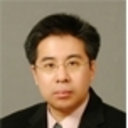The Prevalence of Erosive Esophagitis Is Not Significantly Increased in a Healthy Korean Population - Could It Be Explained?: A Multi-center Prospective Study.
키워드
요약
OBJECTIVE
Researches on the potential risk factors for the development of erosive esophagitis have been conducted extensively, however, the results are conflicting. The aim of this multicenter study was to identify the prevalence rate and risk factors of erosive esophagitis and their interactions with residency status.
METHODS
A total of 4,023 eligible subjects at 8 tertiary health care centers were evaluated using questionnaires, laboratory tests and endoscopy. Univariate and multivariate analyses were conducted to identify independent risk factors for erosive esophagitis.
RESULTS
The prevalence rate of reflux esophagitis was 8.8%. Los Angeles grade A was common type of erosive esophagitis. Residence in a large urban areas was negatively associated with the development of erosive esophagitis (OR, 0.60; 95% CI, 0.40-0.90). The high body mass index (≥ 25 kg/m(2)) was more frequent in residents of small and medium-sized cities than those in big cities (38.8% and 26.9%, respectively; P < 0.001). Seronegativity of Helicobacter pylori was associated with increased erosive esophagitis (OR, 1.91; 95% CI, 1.48-2.46). Triglyceride ≥ 150 mg/dL (OR, 1.65; 95% CI, 1.08-2.07), fasting glucose level ≥ 126 mg/dL (OR, 1.73; 95% CI, 1.06-2.81), and hiatal hernia (OR, 3.11; 95% CI, 1.87-5.16) were also associated with erosive esophagitis.
CONCLUSIONS
The prevalence rate of erosive esophagitis and its risk factors in this study were similar to the result of 8.0% of nationwide study in 2006. Residency and obesity are more important independent risk factors than H. pylori infection status for development of erosive esophagitis in Korea. These results suggest that the prevalence rate of erosive esophagitis in Korea might not increase as in the Western countries.



